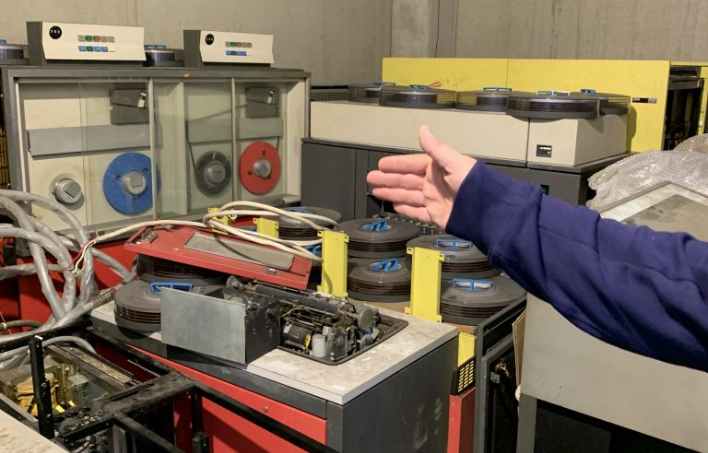IBM System/360: the turning point
Some days ago, I've been looking at a website named "IBM 360 Model 20 Rescue and Restoration": a group of brave engineer started the project of restoration of an IBM System 360 Model 20, documenting all steps of the process.
According with website [4], the project was started in late April of 2019, when one of the engineers happened across a somewhat unusual eBay bid for an IBM 360 Model 20:

In late April of 2019 Adam Bradley and Chris Blackburn were sitting in a pub on a Monday night when Chris happened across a somewhat unusual eBay listing for an IBM 360 Model 20. This eBay listing was unusual mainly because it didn’t actually list the computer as an IBM 360, but rather as an “seltene Anlage “Puma Computer IBM 2020” which roughly translates from German into “rare plant “Puma Computer IBM 2020”.
These fascinating story inspired me to write a brief post to put the reason why this IBM mainframe is so important!
A bit of computer history…
"System/360 represents a sharp departure from concepts of the past in designing and building computers. It is the product of an international effort in IBM's laboratories and plants and is the first time IBM has redesigned the basic internal architecture of its computers in a decade. The result will be more computer productivity at lower cost than ever before. This is the beginning of a new generation - - not only of computers - - but of their application in business, science and government."
With these words, Thomas J. Watson Jr. [6] disclosed ( on April 7, 1964 ) the IBM System/360 [1], a system that introduces, inter alia, one of the great turning points of modern computing: the ISA standard.
The Instruction Set Architecture, represents the whole set of instructions that a processor can perform - whether it is arithmetic, logic, data management or execution control.
The ISA standardization implies the reusability of a software on several computers, different as calculation power, cost and destination of use [2].
That's why System/360 starts a new era: before it there was no software market but a "programming time" market.
All hardware was proprietary, and it needed to be programmed in a totally personalized way, without any possibility of reusing the code.
Currently, in a mature technological market, the definition of standards of interoperability is an usual practice, but in the 50s it was also normal that two machines from the same manufacturer did not speak a common language.
In this sense, System/360 was the founder of a family of machines for which it was possible to develop software with common basis, creating the basics for the software market.
Also the concept of "backward compatibility" born at that time, as an entity to be taken into account in the development of new hardware technologies (in order to maintain compatibility with existing software) and software (to maintain compatibility with existing hardware).
A pillar still present in enterprise IBM systems and which also dominates - with ups and downs - the PC world.
The old and the new
In an interesting article by ArsTechnica [3], John Stokes compares the innovation brought by the System/360 with a more actual revolution, the virtualization.
Both ISA and virtualization break the unique link between a hardware platform and its software, allowing respectively the portability of the code by creating a new market and extending it beyond its borders.
In both cases, according to Stokes, the key is the inclusion of a level of abstraction - between the programmer and the hardware in the case of the ISA, between software and real hardware in the case of virtualization.

Those of you who know what virtualization is have already figured out where I'm headed with this discussion. In a nutshell, virtualization inserts a layer of abstraction (the virtual machine monitor plus guest OS) in between a (host) OS instance and an application instance. And because that layer decouples an application software instance from an OS instance, it enables flexible remapping of those two assets. And the flexible remapping, in turn, has a pair of effects that are similar to what I described above for the ISA, i.e., 1) it creates a market for the dynamic, on-demand rental of a complete application instance, and 2) it enables flexible optimization of the entire stack (including non-network-aware, monolithic apps) via things like load balancing and license pooling.
The long journey of a mainframe...

Returning to the project mentioned at the beginning of this post, currently the IBM mainframe is home, in Melbourne, despite a lot of shipping problems due the Brexit [5]:
Well, where to start! The last few weeks have consisted primarily of anticipation, excitement, and towards the end, utter exhaustion. But finally, FINALLY, the IBM is home!
Good job, boys!
References
- IBM Archives: System/360 Announcement
- Instruction set architecture - Wikipedia
- Analysis: putting virtualization in historical context | Ars Technica
- IBM 360 Model 20 Rescue and Restoration – Documenting the recovery and restoration of an IBM System 360 Model 20 and potentially an IBM System 370 Model 125
- Remember the big IBM 360 mainframe rescue job? For now, Brexit has ballsed it up – big iron restorers • The Register
- Thomas Watson Jr. - Wikipedia